Nepal fuel crisis hampers relief response as winter approaches
- Six months on DEC appeal totals £85 million
- DEC funds help member agencies reach 900,000 people with aid
More than 400,000 people in the high mountains of Nepal are facing a winter of sub-zero temperatures without adequate shelter and supplies, nearly six months after the devastating earthquake struck the country on 25 April 2015, the DEC said today.
While winter supplies of shelter, blankets and food have already reached some people, many more remain exposed to the elements due to a severe shortage of fuel across the country. The fuel crisis is making the deployment and delivery of relief goods almost impossible, DEC agencies said and its members have been forced to cancel distributions or significantly scale-back their activities. The DEC estimates that its agencies have only been able to deliver half of their planned work designed to help families prepare for winter.
Civil unrest and political uncertainty, prompted by opposition to the country’s new constitution, has blocked aid and fuel supplies at the border and threatens to deepen the humanitarian crisis for the millions affected by the earthquake.
Nearly six months after the DEC launched its Nepal Earthquake Appeal on 28 April, the charity also announced the appeal had raised £85 million. The vast majority of funds were donated by individual members of the UK public, with early donations boosted by £5m in UK Aid Match from the Department for International Development. DEC agencies have used this funding to reach more than 900,000 people with food, water, shelter and healthcare across the worst-affected areas of the country, with remaining funds to be spent on relief and recovery over the next 18 months.
The DEC’s Chief Executive Saleh Saeed said:
“We’re overwhelmed by the generosity of the UK public to the DEC’s Nepal Earthquake Appeal. They have enabled our member agencies and their partners to overcome tremendous challenges and reach some of the most remote and worst-affected people and villages in the country. They’re continuing to work alongside Nepali organisations to provide clean water, shelter and emergency relief, already reaching more than 900,000 people.
“Despite these achievements, we are frustrated that the current crisis risks deepening the suffering of earthquake survivors, especially the 400,000 people in high altitude areas who desperately need better shelter, clothes, blankets and food supplies before temperatures drop below zero. Millions of people are still recovering from one of the worst disasters the country has ever faced – nothing must get in the way of urgent help they need.”
The fuel crisis has pushed up the prices of crucial construction materials, restricted travel of aid workers, forced schools to close and prevented distributions of relief goods. Health facilities are reporting a shortage of medicines and are struggling to keep generators running, while farmers risk missing a crucial planting window for wheat.
Meanwhile the United Nations reports that in 120 displacement sites, hosting some 59,000 people, about 85% of shelters are not suitable for the coming winter.
After 605,254 houses were destroyed and 288,255 damaged by the April and May earthquakes and almost 80,000 people relocated due to landslide risks during the monsoon season, the scale of the shelter needs in Nepal remains immense.
DEC agencies have already provided more than 368,000 people with emergency shelter supplies, more than 200,000 people have received food and close to 170,000 people have benefitted from hygiene kits.
An independent review of the response commissioned by the DEC and published today [23 October] found that “cash transfers, used both by government and INGOs, have provided the backbone to the response.”
The report said some agencies have built demonstration shelters to help people build more resilient homes, while others have deployed engineers to share their expertise. Technical staff also trained local construction workers in safe site selection, proper drainage, raised floors and roof fixing. Emergency shelter helps families build temporary structures to protect themselves against the monsoon and the winter weather.
DEC agencies had found ways to overcome the challenges of reaching remote communities during the monsoon season by, for example, combining mobile health and education teams in hard-to-reach locations or working with porters to relay messages when delivering aid to remote locations.
Intensive water, sanitation and hygiene work by members, both before and immediately after the earthquake, helped avert major outbreaks of disease, including cholera, which is endemic in Nepal, the report found.
At the end of August the UN had reported that daily activities in most of the affected districts were starting to return to normal, local markets were functioning and almost all damaged health facilities had resumed services.
“The relief effort made great gains in the first few months of the response, helping hundreds of thousands of people meet their immediate needs, despite the difficult mountainous terrain and huge logistical challenges. If something is not done to resolve the current crisis, these crucial steps towards recovery would start to reverse,” Saeed said.
Examples of work funded by the DEC so far include:
- Action Aid provided close to 93,000 people with food such as rice, oil and baby food.
- Age International provided 4,000 older people with cash grants to help them meet their immediate needs.
- The British Red Cross distributed hygiene kits, ran hygiene promotion activities and installed hand washing points for 34,545 people.
- CAFOD has reached 8,155 people with transitional shelter solutions.
- CARE International reached more than 45,500 people with seeds and 16,250 people with super grain storage bags to help families safely store their seed stock for the next season.
- Christian Aid provided 91,755 people with emergency shelter support and 263 carpenters and masons have been trained on building earthquake-resilient shelters.
- Concern provided 3,251 people with durable monsoon-proof shelter.
- Islamic Relief has provided more than 5,760 people with transitional shelters and pit latrines.
- Oxfam has distributed 34,835 emergency shelter kits of tarpaulins and ropes, helping 226,891 people.
- Plan provided 52,000 people with food in the first 15 days of the response.
- Save the Children screened more than 93,950 children under the age of five for malnutrition.
- Tearfund runs six child friendly spaces benefitting hundreds of children on a daily basis.
- World Vision distributed close to 40,000 people with hygiene kits, alongside hygiene promotion campaigns.
To organise an interview or get more information contact Anna Ridout at aridout@dec.org.uk.
Notes to editors
- The DEC brings 13 leading UK aid charities together in times of crisis: ActionAid UK, Age International, British Red Cross, CAFOD, CARE International, Christian Aid, Concern Worldwide, Islamic Relief, Oxfam, Plan UK, Save the Children, Tearfund and World Vision; all collectively raising money to reach those in need quickly.
- Of the 900,000 people reached with DEC funds, some will have been counted twice because they received different kinds of help from more than one DEC agency. For example it is likely that separate schemes providing large scale water delivery and weekly food vouchers targeting 50,000 of the most vulnerable families will have reached some of the same people.
- The Nepal Earthquake Appeal Response Review was jointly commissioned by the DEC and Canada’s Humanitarian Coalition to inform the next phase of the response. It can be downloaded here from Friday 23 October and copies are available to media under embargo.

